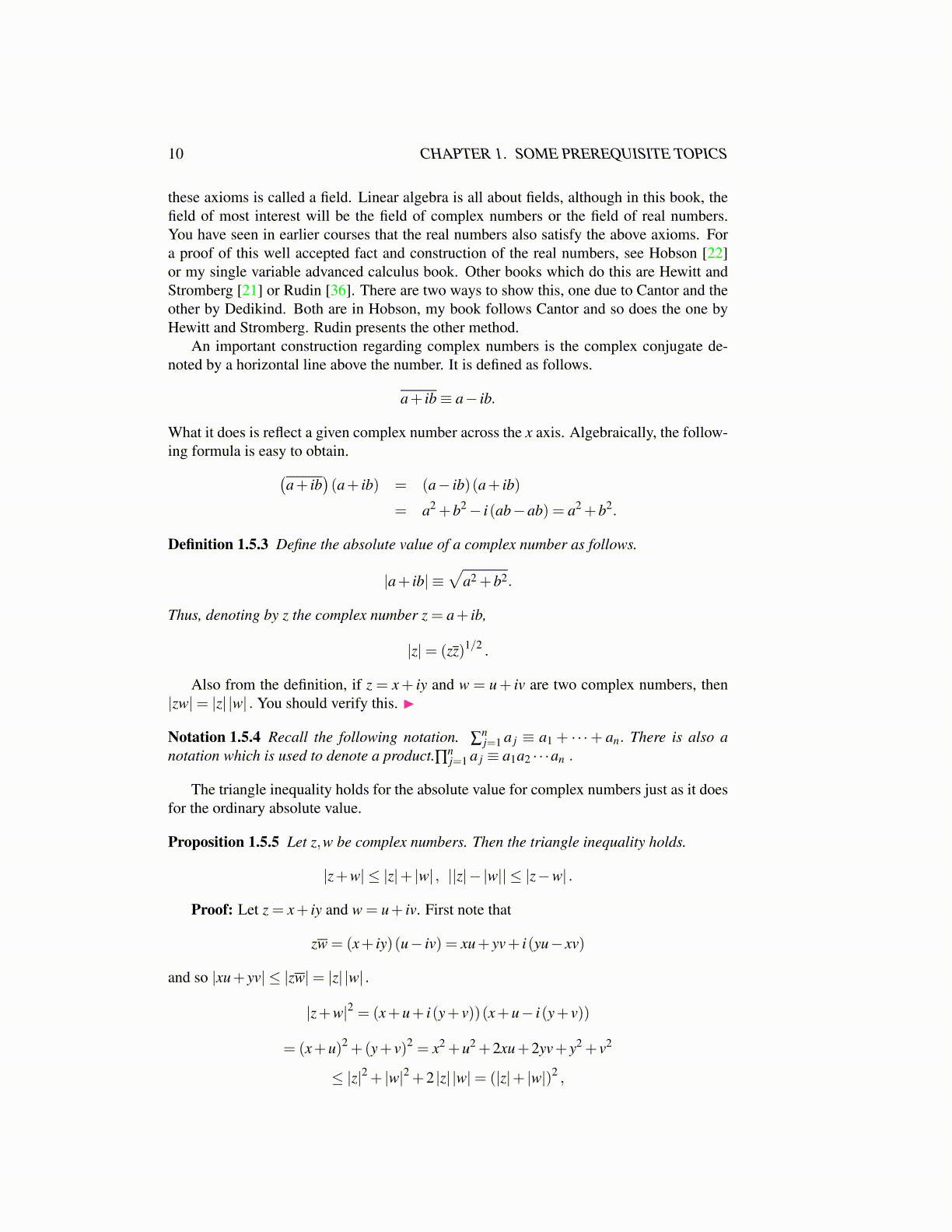
10 CHAPTER 1. SOME PREREQUISITE TOPICS
these axioms is called a field. Linear algebra is all about fields, although in this book, thefield of most interest will be the field of complex numbers or the field of real numbers.You have seen in earlier courses that the real numbers also satisfy the above axioms. Fora proof of this well accepted fact and construction of the real numbers, see Hobson [22]or my single variable advanced calculus book. Other books which do this are Hewitt andStromberg [21] or Rudin [36]. There are two ways to show this, one due to Cantor and theother by Dedikind. Both are in Hobson, my book follows Cantor and so does the one byHewitt and Stromberg. Rudin presents the other method.
An important construction regarding complex numbers is the complex conjugate de-noted by a horizontal line above the number. It is defined as follows.
a+ ib≡ a− ib.
What it does is reflect a given complex number across the x axis. Algebraically, the follow-ing formula is easy to obtain.(
a+ ib)(a+ ib) = (a− ib)(a+ ib)
= a2 +b2− i(ab−ab) = a2 +b2.
Definition 1.5.3 Define the absolute value of a complex number as follows.
|a+ ib| ≡√
a2 +b2.
Thus, denoting by z the complex number z = a+ ib,
|z|= (zz)1/2 .
Also from the definition, if z = x+ iy and w = u+ iv are two complex numbers, then|zw|= |z| |w| . You should verify this. ▶
Notation 1.5.4 Recall the following notation. ∑nj=1 a j ≡ a1 + · · ·+ an. There is also a
notation which is used to denote a product.∏nj=1 a j ≡ a1a2 · · ·an .
The triangle inequality holds for the absolute value for complex numbers just as it doesfor the ordinary absolute value.
Proposition 1.5.5 Let z,w be complex numbers. Then the triangle inequality holds.
|z+w| ≤ |z|+ |w| , ||z|− |w|| ≤ |z−w| .
Proof: Let z = x+ iy and w = u+ iv. First note that
zw = (x+ iy)(u− iv) = xu+ yv+ i(yu− xv)
and so |xu+ yv| ≤ |zw|= |z| |w| .
|z+w|2 = (x+u+ i(y+ v))(x+u− i(y+ v))
= (x+u)2 +(y+ v)2 = x2 +u2 +2xu+2yv+ y2 + v2
≤ |z|2 + |w|2 +2 |z| |w|= (|z|+ |w|)2 ,